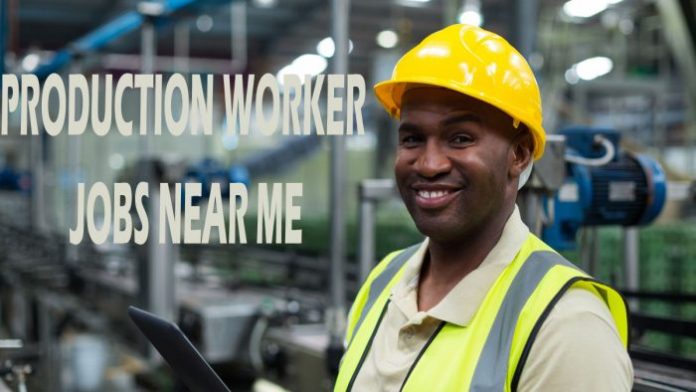How can I find Production Worker Jobs Near me? If you check the internet today, these happen to be two of the most frequently asked questions. If you are also wondering about these above questions, just follow this article to the very end. In this article are the best tools to find production workers Jobs near you
In the Past years, the traditional way to look for Jobs boils down to listening to the radio, reading newspapers, handouts, and billboards. However, in recent times, there has been progressing in the ways most people search for Jobs closer to them. Some people find Jobs through connections while some rely on their qualifications.
Anyways, thanks to the internet Jobs searched websites and tools. You can now find different Jobs in your geographical location and production worker Jobs are no exception. With the help of the Job websites, you can find millions of production worker Jobs near you. Whether you a looking for a production worker Job with or without experience, you can locate one conveniently.
Based on Statistics, the average salary for a Production worker is $32,227 a year in the United States of America. But, if you search well with the Job websites, you can find companies that will pay you more than this. To easily find, the Production worker’s Jobs near you, filter the search by location. This will give you the best results.
Read More: Pediatrician Jobs in USA with Visa Sponsorship
Best Online Tools to Find Production Worker Jobs Near Me
Just like I have mentioned above, there are different types of Job searching tools and websites on the Internet. So, finding the best and most legit one can be a little difficult. However, below are the best legit 5 Popular Online tools to locate production workers’ Jobs near you.
Indeed
Indeed is one of the best and most reliable online Job tools you can ever find in 2022. Job websites provide users with the best and most high-paying jobs of their choice. To locate Jobs on the platform, all you just need to do is create an account. After that, you can send your CV or resume to the company of your choice through the company.
In other words, you can easily find and apply for Production Worker Jobs near you through the website. Visit the website today, create an account and apply for the Production worker Job closer to you.
CareerBuilder
This is another popular Job website in the United States of America. You can easily find production Worker Jobs near you using its search engine. Just visit the website too, create an account, search for the Job with the search engine and apply. You can even check companies’ salaries on these websites.
Zippia.com
This Platform has over 1,530 production workers Jobs on its site. This means you can definitely find a Job of your choice. Just like the above websites, you need to create an account to have access to it. You also have a chance to send your CV or resume to the companies through Zippia.com. Find Production worker Jobs on the website today and apply.
Job2Careers
This is like a locator and helps you to find a Job based on your geographical location. Jobs2Career has tons of Production worker Jobs you can apply for. Just Visit the website, find and choose the one that caught your attention.
ZipRecruiter
You can check out ZipRecruiter for different Production Worker Jobs near you. You can search for Jobs based on your Location. With over 10,000, production worker Jobs on the website, you can easily find your next Job. All you need to do is sign up for an account on ZipRecruiter and find the Job of your choice.

How to Find Production Worker Jobs Near me
Finding Production worker Jobs near you using any of the above websites is very easy. You just need a good device and a stable internet connection. Here are the steps to find a Production Worker job near you
- Open your device’s web browser
- Search for any of the above websites
- Make use of the search engine on the website to find ‘’Production Worker Jobs’’
- Enter your location and go through the tons of options available
- Make sure you read the Job description, duties, salary, and Role
- Create an account if you have not
- Click on the Apply option to start the application process
- Enter your information and required details
- Now, follow the steps on your screen to complete the application process
Read More: Customer Representative Jobs in USA with Visa Sponsorship
Top Companies Hiring Production Workers in 2022
In this section of the article, I will be talking about top companies hiring production workers recently. Check out the below for them
- Mauser Packaging solutions
- Empress Employment professionals
- Top Gun Staffing
- Triumph Foods
- Ambassador Personnel
- Coast personal Services
- Randstad US
- Adecco USA
- FedEx Ground PH
- United Parcel Service
- Jewel Precision
- Beins Chocolate Centerpieces Corp
- Crye Precision
- Canam Steel
You can visit any of the above company’s websites for more information on the production worker Jobs. Also check out the requirements, salary, and description of the Job



